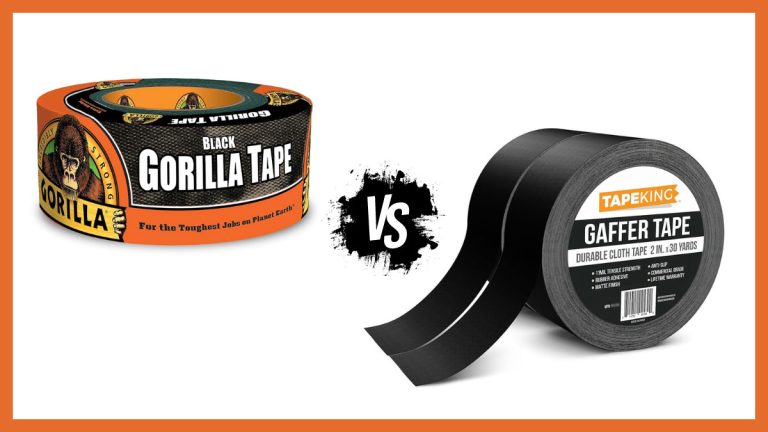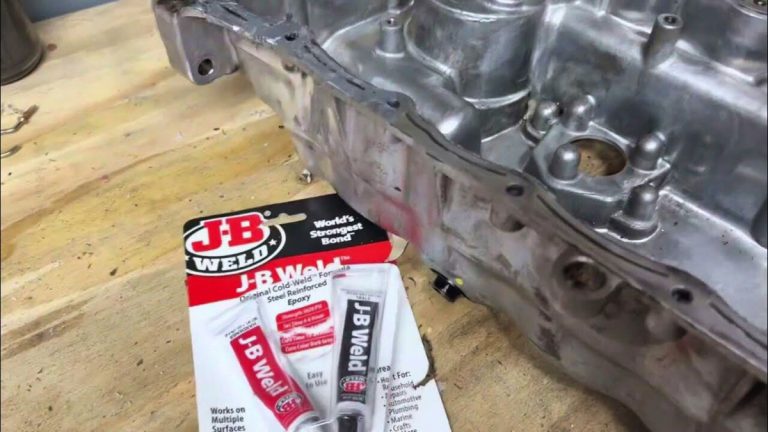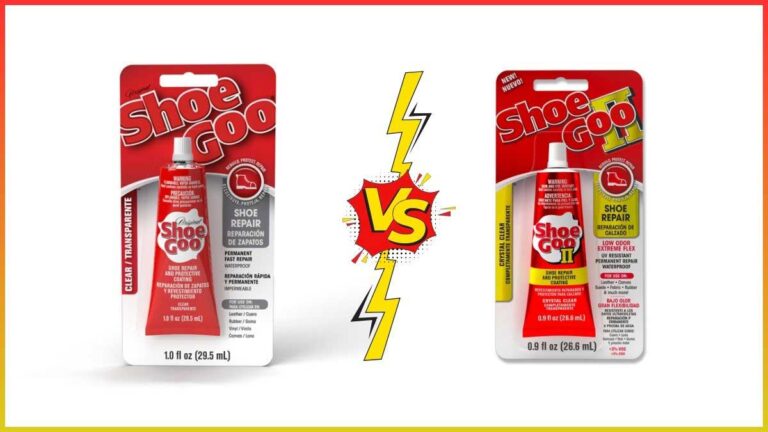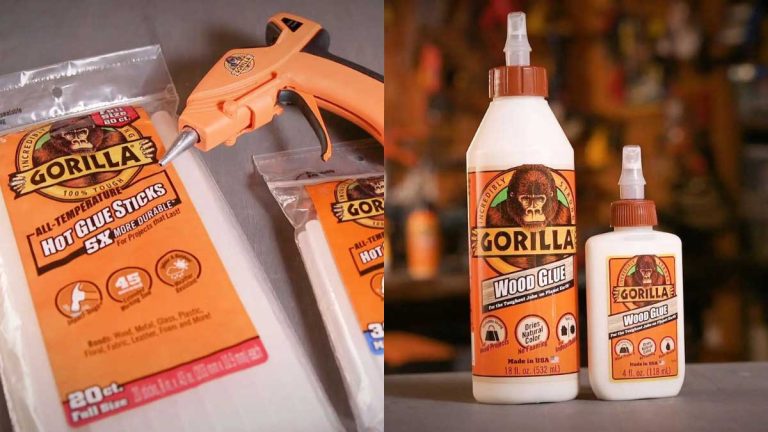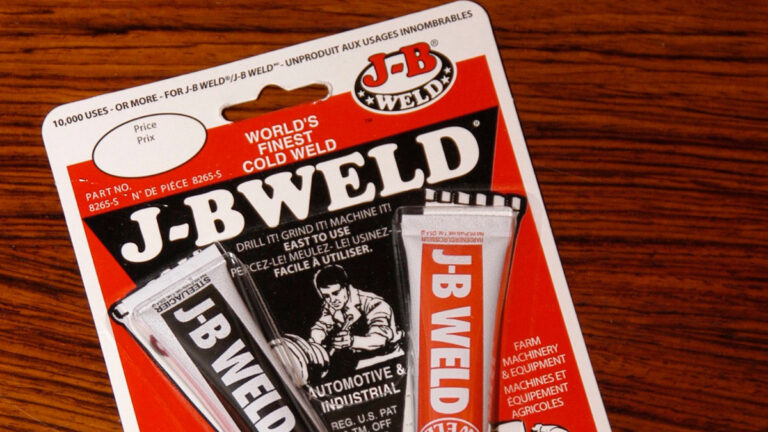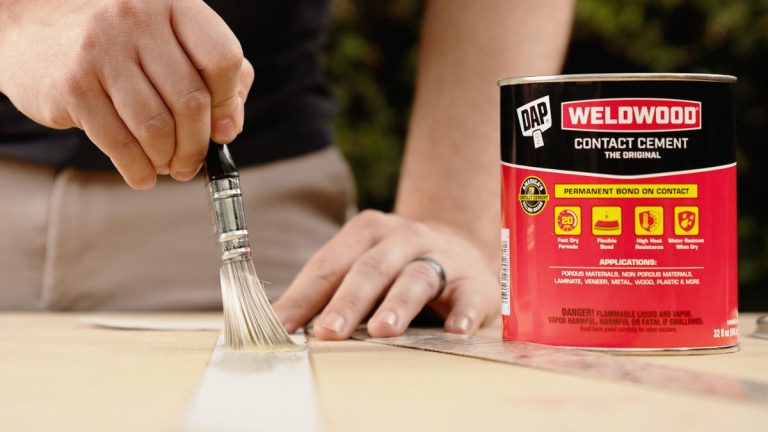Silicone Caulk vs Sealant: Key Differences for Home Projects
When tackling home improvement projects, choosing the right materials can make all the difference. One common dilemma is deciding between silicone caulk and sealant. Both play crucial roles in sealing gaps and preventing leaks, but they aren’t interchangeable.
Understanding the differences between silicone caulk and sealant helps you make informed decisions for your project. Whether you’re sealing a bathroom fixture or weatherproofing windows, knowing which product to use ensures durability and effectiveness. Let’s jump into what sets these two apart and how to choose the best one for your needs.
Key Takeaways
- Material Composition Differences: Silicone sealant is made from 100% silicone, providing high flexibility and moisture resistance, while silicone caulk may include acrylic latex, making it less flexible but more rigid.
- Moisture Resistance: Silicone sealant excels in high-moisture environments like bathrooms and kitchens due to its enhanced water resistance and antifungal properties. In contrast, silicone caulk is better suited for low-moisture areas.
- Suitable Applications: Silicone caulk is ideal for window and door frames and other interior gaps, whereas silicone sealant is perfect for high-moisture areas and outdoor uses due to its superior durability and flexibility.
- Cost Effectiveness: While silicone sealants are more expensive upfront, their long-term durability and less maintenance make them more cost-effective compared to silicone caulks that might require frequent resealing.
Silicone Caulk vs Sealant: Key Differences
Choosing between silicone caulk and sealant depends heavily on the specifics of your project. Each material has unique characteristics suited to different applications.
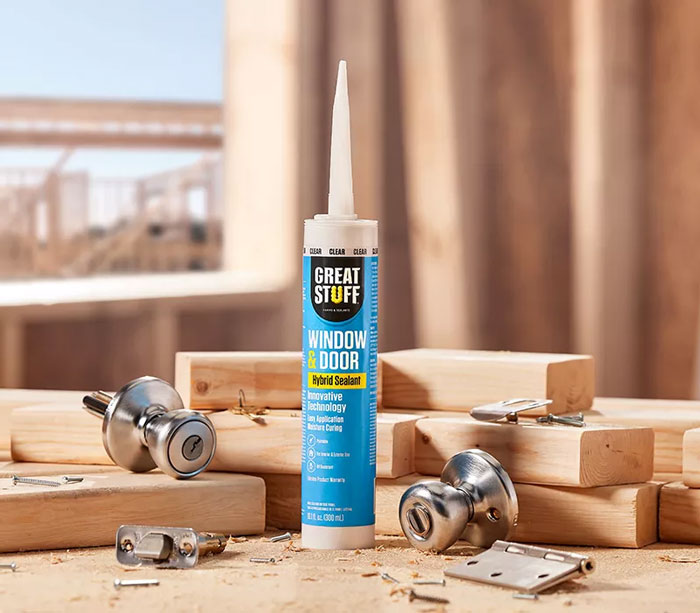
Material Composition and Properties
Silicone Sealant:
- Made from 100% silicone.
- Highly flexible and retains elasticity after curing.
- Suitable for high-moisture and temperature-fluctuating areas, such as bathrooms and kitchens.
Silicone Caulk:
- Available in silicone formulations but can also include acrylic latex and other materials.
- Less flexible compared to pure silicone, making it more rigid.
Moisture Resistance
Silicone Sealant:
- Highly water-resistant.
- Often includes fungicides to prevent mold and mildew.
- Ideal for wet areas like bathrooms and kitchens.
Silicone Caulk:
- Less resistant to moisture compared to silicone sealants.
- Better suited for less damp environments.
Suitable Applications
- Silicone Sealant: Bathtubs, showers, sinks, and kitchen counters.
- Silicone Caulk: Window frames, door frames, and baseboards.
| Feature | Silicone Sealant | Silicone Caulk |
|---|---|---|
| Material Composition | 100% silicone | Can include acrylic latex, silicone |
| Flexibility | Highly flexible | Less flexible |
| Water Resistance | High, with fungicides | Moderate |
| Ideal Uses | Bathrooms, kitchens | Windows, doors, baseboards |
Understanding these key differences helps in selecting the right material for your home improvement needs. For areas with high moisture and temperature fluctuations, silicone sealants offer superior performance. For less demanding applications, silicone caulk provides adequate rigidity and moisture resistance. Always consider the specific requirements of your project to ensure the best results.
Composition and Types
When choosing between silicone caulk and sealant, understanding their compositions and types helps you select the best product for your home improvement projects. Identifying these differences ensures you achieve durable and effective results.
Acrylic Latex
Composition:
- Made from a mixture of latex and acrylic materials.
Properties:
- Rigid when dried
- Prone to shrinking
- Less flexible than silicone sealants
Uses:
- Ideal for filling small gaps such as in picture rails and skirting boards
- Not recommended for areas with high moisture or frequent temperature changes
Advantages:
- Cheaper
- Paintable once cured
- Easier to clean up with mild soap and water
Disadvantages:
- Less durable in wet areas
- Loses its seal over time due to shrinkage
Siliconized Acrylic Latex
Composition:
- A blend of acrylic latex with some silicone additives
Properties:
- Slightly more flexible than pure acrylic latex
- Better adhesion and durability than acrylic latex alone
Uses:
- Suitable for interior and exterior applications where some flexibility is needed
- Effective in areas with moderate moisture exposure
Advantages:
- Improved flexibility over acrylic latex
- Paintable
- Relatively easy to clean
Disadvantages:
- Not as flexible as 100% silicone
- May still shrink slightly over time
Polyurethane Sealant
Composition:
- Made from polyurethane-based compounds
Properties:
- Highly flexible
- Strong adhesive properties
- Resistant to weathering and UV radiation
Uses:
- Ideal for exterior applications like window and door frames
- Effective for areas exposed to varying temperatures and environmental conditions
Advantages:
- Superior flexibility
- Long-lasting adhesive properties
- Excellent for outdoor use
Disadvantages:
- More challenging to apply and clean up
- Higher cost compared to acrylic latex and siliconized acrylic latex
100%-Silicone Sealant
Composition:
- Made from 100% silicone
Properties:
- Highly flexible
- Excellent moisture resistance
- Long-lasting durability
Uses:
- Best for high-moisture areas like bathrooms and kitchens
- Suitable for sealing joints in plumbing fixtures
Advantages:
- Exceptional flexibility and adherence
- Resistant to mold and mildew
- Does not shrink or crack over time
Disadvantages:
- Not paintable
- Requires solvents for cleanup
- Generally more expensive
| Type | Flexibility | Moisture Resistance | Paintable | Durability | Cost | Ease of Cleanup |
|---|---|---|---|---|---|---|
| Acrylic Latex | Low | Low | Yes | Medium | Low | Easy (mild soap, water) |
| Siliconized Acrylic Latex | Medium | Medium | Yes | High | Medium | Moderate (soap, water) |
| Polyurethane Sealant | High | High | No | Very High | High | Difficult (solvents) |
| 100%-Silicone Sealant | Very High | Very High | No | Very High | Highest | Difficult (solvents) |
Ensure you select the suitable type based on the specific requirements of your project. Each product has unique attributes that make it ideal for particular applications, whether you’re dealing with interior gaps or exterior weatherproofing.
Applications and Uses
Selecting the right sealing product depends on the specific application and setting. Whether indoors or outdoors, choosing between silicone caulk and sealant can impact the durability and effectiveness of your project.
Indoor vs. Outdoor
Indoor Applications:
- Silicone Caulk: Silicone caulk generally contains a mix of silicone and other materials like acrylic latex. It’s perfect for areas with minimal exposure to moisture. Examples include window and door frames. Although it can bond to various materials like metal and ceramic, it’s less flexible than pure silicone sealant.
- Silicone Sealant: Pure silicone sealant consists of 100% silicone, making it highly flexible and moisture-resistant. It’s the go-to choice for high-moisture areas like bathrooms and kitchens. It offers superior adhesion to materials like glass, ceramic, and metal, but it’s not suitable for wood applications.
Outdoor Applications:
- Silicone Caulk: Less suitable for outdoor use due to its lower flexibility and resilience. It can deteriorate faster when exposed to varying weather conditions.
- Silicone Sealant: Ideal for outdoor use. It maintains flexibility even in extreme temperatures, ranging from -40°C to +232°C. Its UV-resistant properties ensure longevity, making it perfect for sealing gaps around windows, doors, and roofing edges exposed to direct sunlight.
Specific Use Cases
Bathrooms and Kitchens:
- Waterproofing: Silicone sealants provide excellent waterproofing, making them ideal for showers, bathtubs, sinks, and countertops. Their water-repellent nature helps prevent mold and mildew growth.
- Durability: They maintain elasticity and adhesion over time, ensuring long-term durability even in constantly wet environments.
Windows and Doors:
- Thermal Resilience: Siliconized acrylic latex caulk works well around window frames and door gaps inside your home. But, for external applications, silicone sealant is preferred for withstanding temperature fluctuations.
- Quick Fixes: For minor indoor repairs, like small cracks or gaps in walls or ceilings, acrylic latex caulk works fine. It’s paintable, allowing for a more polished look.
- Flexible Seals: Use silicone sealant for repairs requiring flexible, durable seals. It adheres well to nonporous surfaces and ensures the seal holds up against stress and movement.
| Use Case | Ideal Product | Key Properties |
|---|---|---|
| Showers/Sinks | Silicone Sealant | High flexibility, exceptional moisture resistance |
| Window Frames | Silicone Sealant or Caulk | Temperature resilience, weather resistance (Sealant for outside, Caulk for inside) |
| Exterior Sealing | Silicone Sealant | UV resistance, broad temperature tolerance |
| Indoor Cracks | Acrylic Latex Caulk | Paintable, cost-effective |
| Roofing Edges | Silicone Sealant | UV-resistant, maintains properties in extreme conditions |
Pros and Cons
When selecting materials for your home improvement projects, it’s crucial to understand the pros and cons of silicone caulk and sealant. This section delves into the specific advantages and disadvantages of both options.
Pros and Cons of Silicone Caulk
Pros:
- Rigidity and Tight Seal: Silicone caulk, primarily a mixture of latex and acrylic materials, forms a rigid and tight seal upon drying. This makes it suitable for areas requiring minimal expansion, such as window and door frames.
- Cost-Effective: Silicone caulk generally costs less than silicone sealants, making it a budget-friendly choice for multiple repairs around your home.
- Paintability: Once cured, acrylic latex caulk can be painted over, allowing you to match the color to your decor. This is not possible with silicone sealants, which remain unpaintable.
- Ease of Cleanup: Cleaning up caulk is simple with mild soap and water. In contrast, silicone sealants require chemical solvents for removal.
Cons:
- Limited Flexibility: After drying, caulk becomes rigid, which makes it less effective for areas experiencing significant movement or temperature fluctuations.
- Moisture Sensitivity: High-moisture areas aren’t ideal for caulk, as it can shrink and lose its seal, leading to potential leaks or gaps over time.
Pros and Cons of Sealant
Pros:
- High Flexibility: Silicone sealants, composed of 100% silicone, offer excellent flexibility and elasticity. This makes them ideal for areas with high movement or significant temperature changes.
- Moisture Resistance: With superior moisture resistance, silicone sealants are perfect for bathrooms, kitchens, and other wet areas. They maintain their seal even in continuously damp environments.
- Durability: Silicone sealants offer long-term durability, standing up to harsh weather conditions, UV rays, and time without degrading.
Cons:
- Higher Cost: Compared to caulk, silicone sealants tend to be more expensive, which can impact your budget if multiple repairs are needed.
- Non-Paintability: Silicone sealants cannot be painted over, limiting their aesthetic adaptability. You’ll need to match the sealant color to your project from the outset.
- Difficult Cleanup: Removing silicone sealant requires chemical solvents, which can be more labor-intensive and potentially hazardous compared to soap and water cleanup for caulk.
Comparison Table
Here’s a quick comparison of the key pros and cons of silicone caulk and silicone sealant to help you make an well-informed choice:
| Feature | Silicone Caulk | Silicone Sealant |
|---|---|---|
| Flexibility | Limited | High |
| Moisture Resistance | Low | High |
| Durability | Moderate | High |
| Paintability | Yes | No |
| Cleanup | Easy (soap and water) | Difficult (requires solvents) |
| Cost | Lower | Higher |
Understanding these differences can help you choose the right material for your specific needs, ensuring effective and long-lasting results in your home improvement projects.
Drying Time and Flexibility
Drying Time
Silicone Caulk and Sealant Drying Time
- Drying: Both silicone caulk and sealant dry to the touch within 30 minutes to an hour. This doesn’t mean they’re fully cured.
- Curing: Full curing involves chemical changes after exposure to oxygen, which takes significantly longer. Silicone sealants and caulks typically take at least 24 hours to cure but can require up to 21 days depending on thickness and environmental conditions.
Factors Influencing Curing Time
- Humidity:
- Higher humidity accelerates the curing process for silicone sealants and caulks.
- Temperature:
- Warmer temperatures generally speed up curing times, though direct heat may negatively affect longevity.
Flexibility
Silicone Caulk Flexibility
- Composition: Silicone caulk often includes additional materials like acrylic latex. This blend impacts its flexibility.
- Suitability: Better suited for environments with less moisture exposure, such as window and door frames.
- Examples: In a bathroom with minimal moisture, silicone caulk might be preferred for sealing trims.
Silicone Sealant Flexibility
- Composition: Made from 100% silicone, offering high flexibility.
- Suitability: Ideal for high-moisture areas like bathrooms and kitchens.
- Examples: For shower or sink sealing, silicone sealants excel due to their superior moisture resistance.
| Property | Silicone Caulk | Silicone Sealant |
|---|---|---|
| Drying Time | 30 min to 1 hour (touch dry) | 30 min to 1 hour (touch dry) |
| Curing Time | 24 hours to 21 days | 24 hours to 21 days |
| Composition | Silicone, acrylic latex blend | 100% silicone |
| Flexibility | Less flexible | Highly flexible |
| Ideal Use | Less damp environments | High-moisture areas |
| Example Uses | Window frames, door frames | Bathrooms, kitchens |
By understanding drying times and flexibility, you can make informed choices about which product to use in your specific applications. Consider environmental factors and material properties to ensure the best outcomes for your home improvement projects.
Durability and Maintenance
When comparing silicone caulk and silicone sealant, understanding their durability and maintenance is crucial for making informed choices.
Durability
- Silicone Caulk:
Flexibility plays a significant role in the durability of silicone caulk. It can expand and contract with temperature changes without cracking. This makes it effective in areas subject to movement and extreme temperatures, such as outdoor applications and high-moisture areas like bathrooms and kitchens. For instance, using silicone caulk around bathtubs or kitchen sinks ensures a durable and long-lasting seal. - Silicone Sealant:
Silicone sealant also maintains high durability due to its flexibility. It performs exceptionally well across a wide temperature range (-40°C to +232°C), making it suitable for both indoor and outdoor use. Its resistance to weathering allows it to seal non-porous surfaces like glass efficiently. This property makes it ideal for sealing windows, doors, and other vulnerable areas against the elements.
Maintenance
- Cleaning:
Both silicone caulk and silicone sealant are easy to maintain. Their surfaces can be cleaned with water or alcohol-soaked rags. This straightforward cleaning process ensures that both materials remain in good condition over time, making them practical choices for various applications.
Comparison Table
Here’s a detailed comparison of silicone caulk and sealant to help you decide which is best for your needs:
| Feature | Silicone Caulk | Silicone Sealant |
|---|---|---|
| Temperature Resistance | High (suitable for extreme temperatures) | Very High (-40°C to +232°C) |
| Flexibility | High (expands and contracts) | Extremely high (retains flexibility) |
| Durability | Long-lasting in high-moisture areas | Extremely durable, weather-resistant |
| Cleaning | Easy with water or alcohol-soaked rags | Easy with water or alcohol-soaked rags |
| Ideal Use Cases | Bathrooms, kitchens, outdoor areas | Glass, windows, doors, non-porous surfaces |
Understanding these details helps you choose the right product for your specific project, ensuring long-lasting results and ease of maintenance.
Cost-Effectiveness
Price Difference
Caulk generally offers a more affordable option than silicone sealant. Caulk prices typically range from $3 to $5 per tube. But, silicone caulk usually starts at about $8 and can go up to $20 or more per tube. This price disparity arises from the material composition of each product.
Material Composition
Caulk is usually composed of acrylics and latex, which are less expensive materials. This mix contributes to its lower cost. Silicone sealants, on the other hand, are often made from 100% pure silicone, which elevates their price.
Long-Term Cost
Though you might pay more upfront for silicone sealants, their long-term benefits can outweigh the initial expense. Silicone sealants offer superior durability and longevity, often lasting for decades without requiring reapplication. In the long run, their extended lifespan can make them a more cost-effective choice.
Maintenance and Replacement
Caulk requires more frequent maintenance and resealing, especially in high-moisture or outdoor environments. This frequent upkeep can increase overall costs.
| Feature | Caulk | Silicone Sealant |
|---|---|---|
| Price per Tube | $3 to $5 | $8 to $20+ |
| Material Composition | Acrylics and latex | 100% pure silicone |
| Durability | Requires frequent resealing | Lasts decades |
| Maintenance | High | Low |
By understanding these factors, you can make more informed decisions when selecting between silicone caulk and traditional caulk for your projects.
Conclusion
Choosing between silicone caulk and sealant depends on your specific project needs. Silicone sealants offer superior flexibility and moisture resistance, making them ideal for high-moisture areas like bathrooms and kitchens. They may cost more but provide long-term durability.
On the other hand, silicone caulk, often blended with acrylic latex, is cost-effective and paintable, suitable for less damp environments such as window and door frames. Understanding the properties, advantages, and limitations of each product ensures you select the right material for effective and lasting results in your home improvement projects.
Frequently Asked Questions
Where should you not use silicone caulk?
Silicone caulk doesn’t accept paint well, causing paint to bead and not adhere properly. Therefore, avoid using silicone caulk on painted surfaces, especially wooden areas, as you won’t be able to touch up the paint later.
Is sealant or caulk better for showers?
Sealant is generally better for showers as it offers superior water resistance. Silicone sealant forms a watertight, flexible seal that withstands heavy temperature changes, making it ideal for bathrooms.
Should I use silicone or caulk for a shower?
Use silicone sealant for showers. Its flexibility and moisture resistance provide a durable seal that doesn’t require frequent reapplication, making it more effective in high-moisture areas like bathrooms.
When should you not use silicone sealant?
Avoid using silicone sealant on surfaces that require painting, as it doesn’t accept paint. Additionally, it’s not suitable for structural joints needing significant load-bearing capacity, as it may not offer the necessary support.
What surfaces do silicone caulk and sealant not stick to?
Silicone caulk and sealant do not adhere well to greasy or oily surfaces. Ensuring that the surface is clean and free from contaminants is crucial for proper adhesion.

